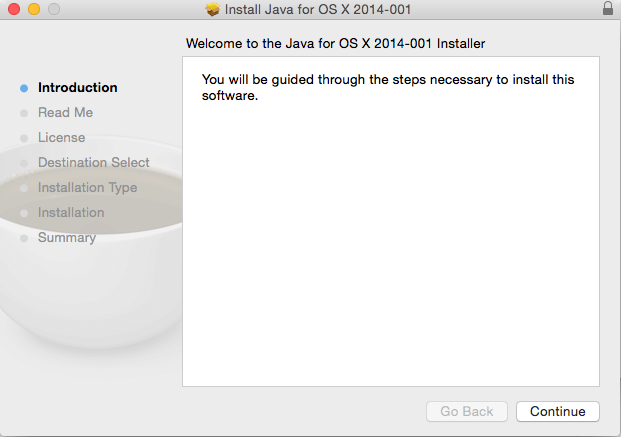See JDK 7 and JRE 7 Installation Guide for general information about installing JDK 7 and JRE 7.
Important: Ensure that you install Java SE 6 Runtime only by clicking Install in the pop-up window.If you install Java SE 6 or 7 Runtime through any other means (for example, by directly accessing Java.com), Dreamweaver could still display the prompt.
Java Se 6 Mac Download
- Download Java JDK. Java Platform, Standard Edition (Java SE) lets you develop and deploy Java applications on desktops and servers. Java offers the rich user interface, performance, versatility.
- Download Apple Java for OS X 10.7/10.8 for Mac to patch Java SE 6 components.
- The Eclipse Foundation - home to a global community, the Eclipse IDE, Jakarta EE and over 375 open source projects, including runtimes, tools and frameworks.
See the Mac OS X Platform Install FAQ for general information about installing JDK 7 on Mac OS X.
Contents
System Requirements
- Any Intel-based Mac running Mac OS X 10.7.3 (Lion) or later.
- Administrator privileges.
Note that installing the JDK on a Mac is performed on a system wide basis, for all users, and administrator privileges are required. You cannot install Java for a single user.
Installing the JDK also installs the JRE. The one exception is that the system will not replace the current JRE with a lower version. To install a lower version of the JRE, first uninstall the current version.
JDK 7 Installation Instructions
Installation of the 64-bit JDK on Mac Platforms

When you download the Java Development Kit (JDK), the associated Java Runtime Environment (JRE) is installed at the same time. The JavaFX SDK and Runtime are also installed and integrated into the standard JDK directory structure.
Depending on your processor, the downloaded file has one of the following names:
- jdk-7u<version>-macosx-amd64.dmg
- jdk-7u<version>-macosx-x64.dmg
Where <version> is 6 or later.
1. Download the file. Before the file can be downloaded, you must accept the license agreement.
2. From either the Downloads window of the browser, or from the file browser, double click the .dmg file to launch it.
3. A Finder window appears containing an icon of an open box and the name of the .pkg file Double click the package icon to launch the Install app.
4. The Install app displays the Introduction window. Click Continue.
4a. Note that, in some cases, a Destination Select window appears. This is a bug, as there is only one option available. If you see this window, select Install for all users of this computer to enable the continue button. Click Continue.
5. The Installation Type window appears. Click Install.
6. A window appears which says 'Installer is trying to install new software. Type your password to allow this.' Enter the Administrator login and password and click Install Software.
7. The software is installed and a confirmation window appears. Click the ReadMe for more information about the installation.
After the software is installed, delete the dmg file if you want to save disk space.
Determining the Default Version of the JDK
_mockup_on_Sony_Ericsson_phone.jpg)
A: If you have not yet installed Apple's Java Mac OS X 2012-006 update, then you are still using a version of Apple Java 6 that includes the plug-in and the Java Preferences app. See Note for Users of Macs that Include Apple Java 6 Plug-in.
There can be multiple JDKs installed on a system – as many as you wish.
When launching a Java application through the command line, the system uses the default JDK. It is possible for the version of the JRE to be different than the version of the JDK.
You can determine which version of the JDK is the default by typing java -version in a Terminal window. If the installed version is 7u6, you will see a string that includes the text 1.7.0_06. For example:
To run a different version of Java, either specify the full path, or use the java_home tool:
For more information, see the java_home(1) man page.
Uninstalling the JDK
To uninstall the JDK, you must have Administrator privileges and execute the remove command either as root or by using the sudo(8) tool.
Navigate to /Library/Java/JavaVirtualMachines and remove the directory whose name matches the following format:*
For example, to uninstall 7u6:
Do not attempt to uninstall Java by removing the Java tools from /usr/bin. This directory is part of the system software and any changes will be reset by Apple the next time you perform an update of the OS.
*The 7u4 and 7u5 releases were installed into a directory that does not follow this format. To uninstall 7u4 or 7u5, remove the 1.7.0.jdk directory from the same location.

If, after installing Java for OS X 2014-001 and the latest version of Java 7 from Oracle, you want to disable Java 7 and re-enable the Apple-provided Java SE 6 web plug-in and Web Start functionality, follow these steps.
E6 1.6 Download
Note: You must be logged in as an administrator. If prompted for your administrator password after a command, enter it and then press the Return or Enter key.
- Open Terminal, located in the Utilities folder.
- Enter this command, then press the Return or Enter key:
- Enter this command, then press the Return or Enter key:
- Enter this command, then press the Return or Enter key:
- To re-enable Java SE 6 Web Start, enter this command, then press the Return or Enter key:
Learn more
Java E6 Mac Download Windows 10
The following steps will undo the above commands and restore Java 7 in OS X Lion and later.
- Disable Java SE 6 Web Start opening:
- Enter this command, then press the Return or Enter key:
- When prompted, enter your administrator password, then press the Return or Enter key.
- Re-enable the Java 7 applet plug-in bydownloading and reinstalling the latest version of Oracle Java 7 JRE.